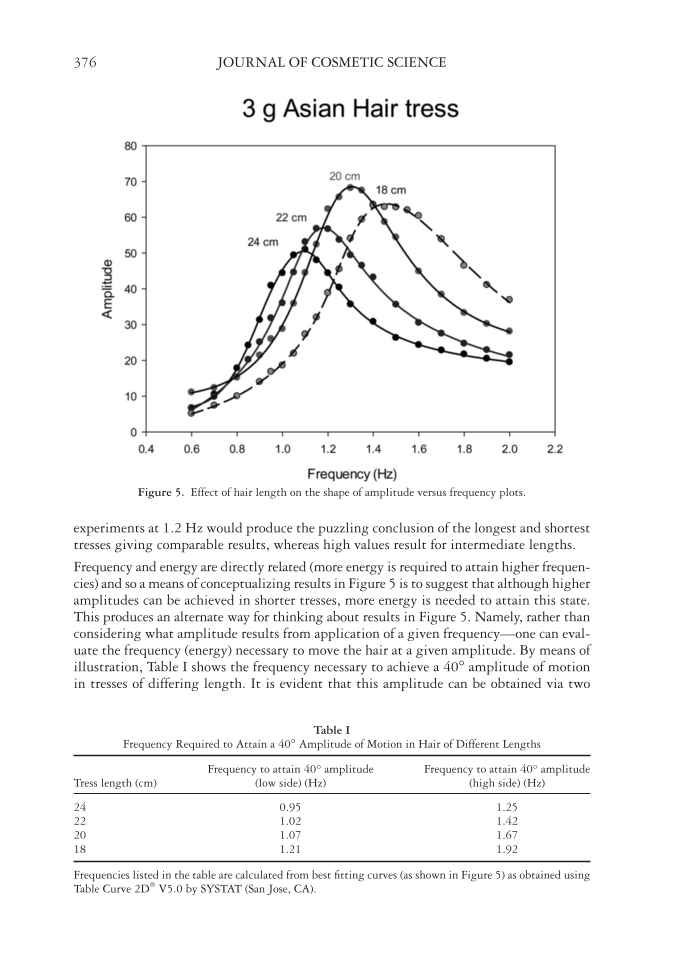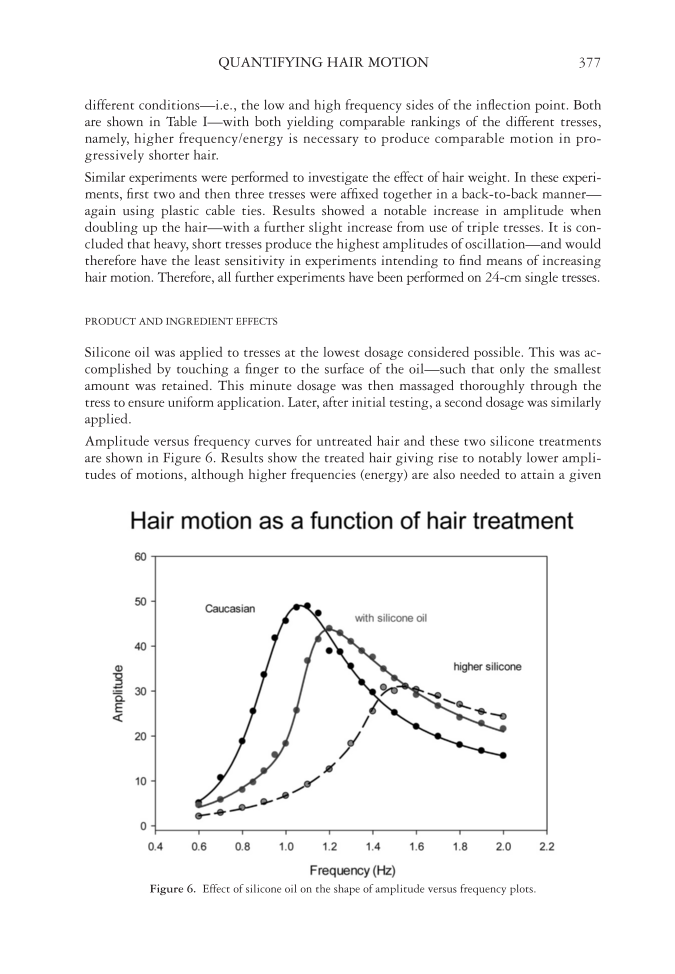JOURNAL OF COSMETIC SCIENCE 376 experiments at 1.2 Hz would produce the puzzling conclusion of the longest and shortest tresses giving comparable results, whereas high values result for intermediate lengths. Frequency and energy are directly related (more energy is required to attain higher frequen- cies) and so a means of conceptualizing results in Figure 5 is to suggest that although higher amplitudes can be achieved in shorter tresses, more energy is needed to attain this state. This produces an alternate way for thinking about results in Figure 5. Namely, rather than considering what amplitude results from application of a given frequency—one can eval- uate the frequency (energy) necessary to move the hair at a given amplitude. By means of illustration, Table I shows the frequency necessary to achieve a 40° amplitude of motion in tresses of differing length. It is evident that this amplitude can be obtained via two Table I Frequency Required to Attain a 40° Amplitude of Motion in Hair of Different Lengths Tress length (cm) Frequency to attain 40° amplitude (low side) (Hz) Frequency to attain 40° amplitude (high side) (Hz) 24 0.95 1.25 22 1.02 1.42 20 1.07 1.67 18 1.21 1.92 Frequencies listed in the table are calculated from best fi tting curves (as shown in Figure 5) as obtained using Table Curve 2D® V5.0 by SYSTAT (San Jose, CA). Figure 5. Effect of hair length on the shape of amplitude versus frequency plots.
QUANTIFYING HAIR MOTION 377 different conditions—i.e., the low and high frequency sides of the infl ection point. Both are shown in Table I—with both yielding comparable rankings of the different tresses, namely, higher frequency/energy is necessary to produce comparable motion in pro- gressively shorter hair. Similar experiments were performed to investigate the effect of hair weight. In these experi- ments, fi rst two and then three tresses were affi xed together in a back-to-back manner— again using plastic cable ties. Results showed a notable increase in amplitude when doubling up the hair—with a further slight increase from use of triple tresses. It is con- cluded that heavy, short tresses produce the highest amplitudes of oscillation—and would therefore have the least sensitivity in experiments intending to fi nd means of increasing hair motion. Therefore, all further experiments have been performed on 24-cm single tresses. PRODUCT AND INGREDIENT EFFECTS Silicone oil was applied to tresses at the lowest dosage considered possible. This was ac- complished by touching a fi nger to the surface of the oil—such that only the smallest amount was retained. This minute dosage was then massaged thoroughly through the tress to ensure uniform application. Later, after initial testing, a second dosage was similarly applied. Amplitude versus frequency curves for untreated hair and these two silicone treatments are shown in Figure 6. Results show the treated hair giving rise to notably lower ampli- tudes of motions, although higher frequencies (energy) are also needed to attain a given Figure 6. Effect of silicone oil on the shape of amplitude versus frequency plots.
Purchased for the exclusive use of nofirst nolast (unknown) From: SCC Media Library & Resource Center (library.scconline.org)









































































































